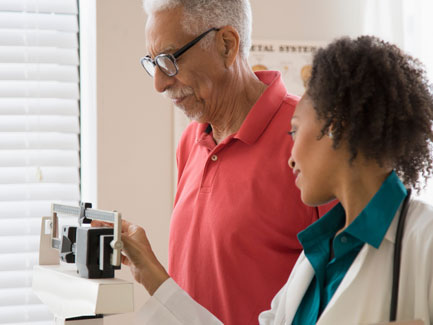
Getting medical interventions
Many people with obesity do not get an obesity diagnosis and treatment from healthcare providers. Find out what you can do to get the help you need.
Counterfeit medicine, sometimes called falsified medicine, can have potentially dangerous health consequences and represents a rising public health challenge. In addition, it can also lead to a loss of confidence in the healthcare system.
The World Health Organization (WHO) has received reports of falsified medicines from all regions of the world, with 1 in 10 medical products in low- and middle-income countries estimated to be substandard or falsified. This problem is not a new one – counterfeit and substandard drugs have a long history, with the supply of falsified anti-malaria drugs dating back to the early 1600s.
Amidst a surge in counterfeit obesity medication, awareness of counterfeit medicines can protect you and the people around you. This article explores why counterfeit medicine present a big issue and gives you practical advice on how to reduce the risk of being exposed to them to protect your health.
Medicines go through rigorous testing and approval processes to ensure they are safe for the public and treat a disease in the way they intend to. There are many health authorities that ensure each product goes through this process and are only distributed through licensed and legitimate methods (for example, prescription-only treatments).
Falsified and counterfeit products imitate real, approved medicines, but are deliberately mislabelled and avoid this authorisation process. It can be helpful to understand these different definitions:
Falsified medicines may be sold online or other unauthorised platforms and often do not require a prescription or consultation with a healthcare professional to be bought. Depending on where the medication is obtained, there can also be a substantial price difference between the falsified and authentic medicines.
A well-designed counterfeit product will appear to be the same as the real, approved medicine. However, variations to the active ingredients – the part of the medicine that treats a condition – may lead to harm. These can include:
Due to the nature of these products being produced and distributed via unlicensed channels, you cannot be sure of the contents of a counterfeit medicine. Not only could taking these medicines result in not getting the correct treatment, but they could also expose you to toxic or harmful ingredients that, together, have potentially dangerous consequences for your health.
It can be a worrying thought to know that counterfeit medicines could cross your path. These are some top tips on how you can protect yourself from the counterfeit products:
If you have any suspicions that a medicine is not authentic, do not purchase or take it, and speak to your doctor.
Countries have different regulation and approval processes, which can lead to certain medicines being available in some countries and not others - even if the demand for a product is high. This creates an opportunity for counterfeit medication to fill these shortages and some people might be enticed by the promise of an online alternative, especially if they do not fully realise the risks of taking them.
Prescription medications that require approval from a healthcare professional to be distributed are a target for those making counterfeit medicine. Strict measures that require a medicine to be distributed by prescription only are in place to keep you safe, but they create an opportunity for counterfeit medication to target those who might not need them.
You should not take any treatment that hasn’t been discussed with your doctor. If you find yourself struggling to find a trusted source for a medication you need, it is best to speak to your doctor who can help you to decide the best course of action which protects your health and safety.
HQ24OB00206
